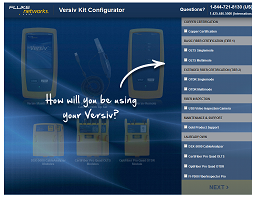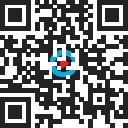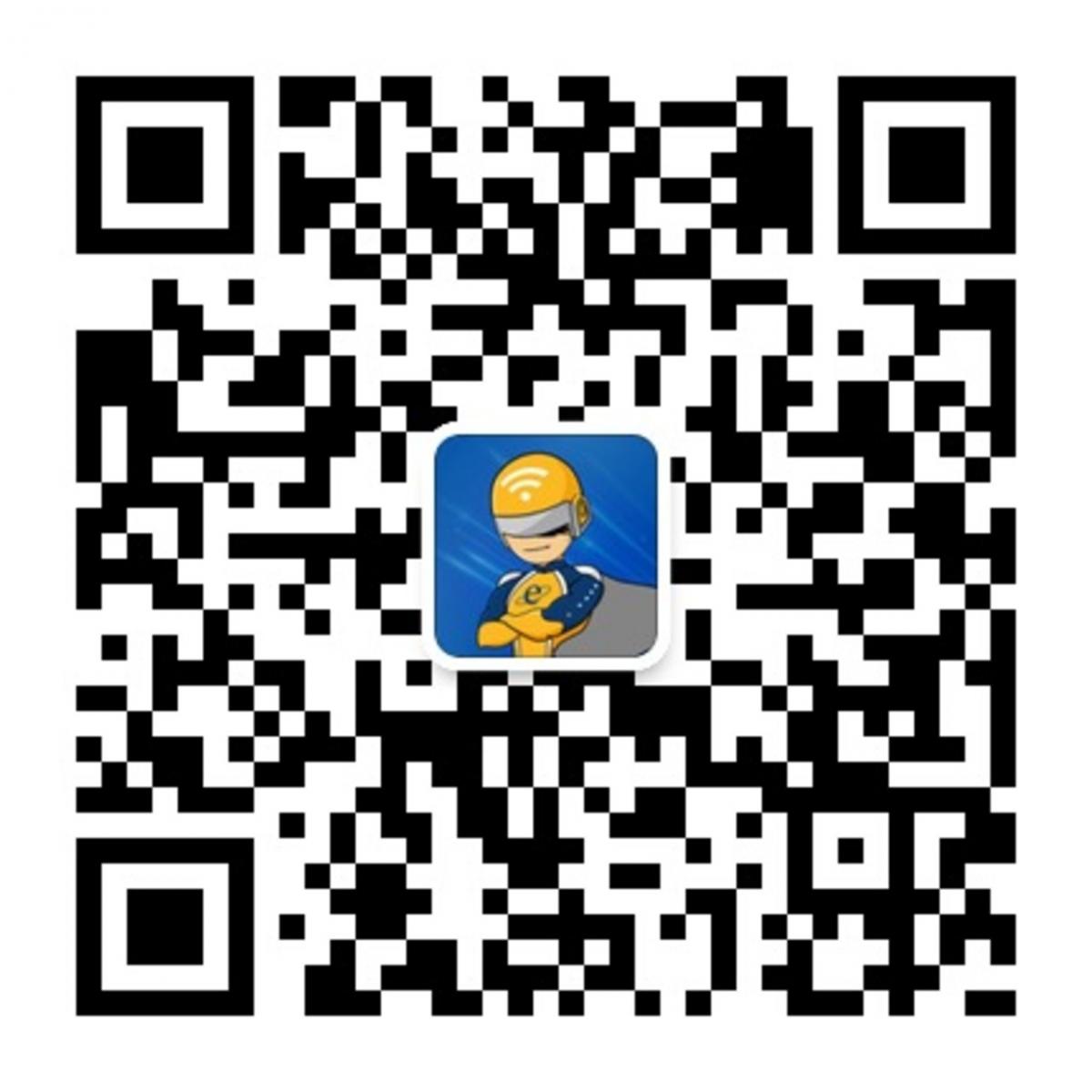LinkIQ Duo: Cable, PoE, Wi-Fi, and Network Testing All in One Device
January 6, 2025 / General, Installation and testing, Industrial Networks
In a 2023 Network IT Management Report that surveyed more than 4,500 IT professionals, nearly 50 percent of them said they spend at least half their time on reactive network tasks like troubleshooting, mapping, and configuration — not to mention prioritizing robust, reliable, and secure Wi-Fi performance for all their users who connect wirelessly. So we’ve added Wi-Fi analysis to the LinkIQ™ tester’s already trusted cable, Power over Ethernet (PoE), and network capabilities. Introducing the LinkIQ Duo: your essential cable, Wi-Fi, and network tester.

Cable Testing You Trust — From the LAN to the Factory
The LinkIQ tester measures cable lengths up to 1000 feet (305 m) and provides distance to faults such as opens, shorts, and unterminated cable. With the remote ID, you can run a complete wire map test of the cable pairs to identify miswirings such as reversed pairs, crossed pairs, and split pairs. If the cabling is shielded, it will also show whether you’ve got continuity of the shield. If the cable doesn’t pass the wire map test, the graphical display of color-coded conductors makes it very easy to see exactly what went wrong.
With a LinkIQ tester, you can also qualify the bandwidth of a cabling link from 10BASE-T to 10GBASE-T (10 Mb/s up to 10 Gb/s) to determine its capability to support a specific application. As a true qualification tester, the LinkIQ unit performs these tests via frequency- and IEEE standards-based measurements to ensure that tested links meet actual performance requirements. This is ideal for determining if the network infrastructure can support new equipment, where other simple testers can only indicate continuity and the ability to transmit data across the link. You can also set a performance limit requirement from 10 Mb/s to 10 Gb/s for a simple PASS/FAIL indication. If you need to delve deeper, the LinkIQ tester will also show you which testing parameter caused the failure — length, wire map, insertion loss, return loss, near-end cross talk, or delay skew.
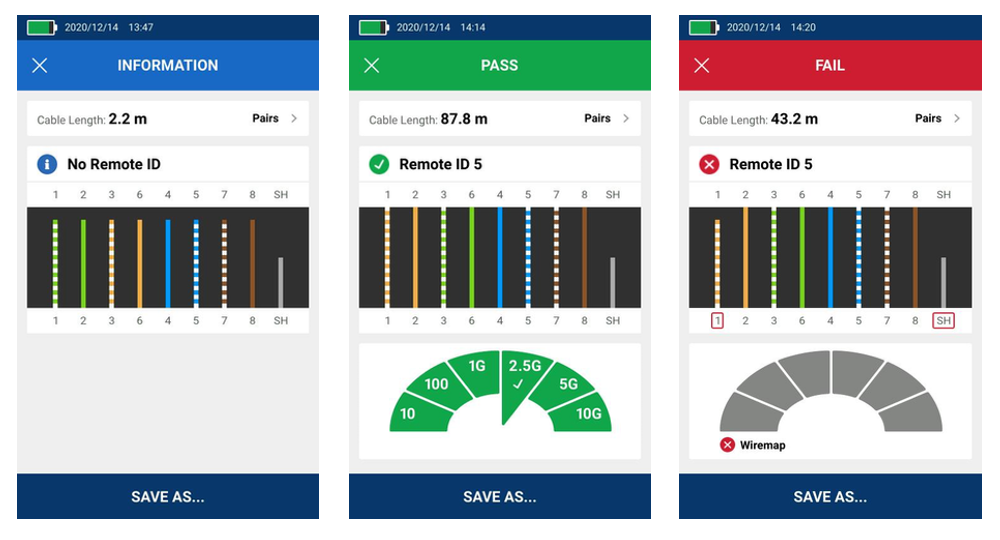 Left: Cable test without remote attached shows length and pairing of each wire. Center: Cable test with remote attached shows remote ID, length and pairing of each wire, and cable performance up to 10 Gb/s. Right: Cable test with remote attached shows remote ID, length, and pairing of each wire, and cable performance of up to 2.5 Gb/s, but failed the test due to a user-set performance limit of 10 Gb/s.
Left: Cable test without remote attached shows length and pairing of each wire. Center: Cable test with remote attached shows remote ID, length and pairing of each wire, and cable performance up to 10 Gb/s. Right: Cable test with remote attached shows remote ID, length, and pairing of each wire, and cable performance of up to 2.5 Gb/s, but failed the test due to a user-set performance limit of 10 Gb/s.
Since the most common causes of Industrial Ethernet (IE) failures are cable-related, it’s helpful to be able to test cabling links that use an industrial-grade connector versus the standard commercial-grade RJ45. The LinkIQ-Duo IE version includes a multi-connector adapter that allows testing M12X, M12D, and M8D terminated cables. In addition to Ethernet/IP, the LinkIQ-Duo IE tester can qualify bandwidth from 10 Mb/s up to 10 Gb/s for PROFINET, EtherCAT, and other Industrial Ethernet protocols.
PoE Testing — With Certified Confidence
While PoE makes installation of devices such as security cameras and access points simpler, a survey by the Ethernet Alliance of over 800 installers, integrators, and end users found that four out of five respondents experienced difficulties integrating PoE systems.
To simplify PoE installation and troubleshooting, the LinkIQ tester displays the pairs where power is provided, including the different power levels and pairs for dual-signature implementations. The unit shows you the actual negotiated PoE class (0-8) and wattage available for a powered device (PD) at both the hardware and software levels, ensuring a device can both connect to the network and allow for dynamic allocation of power from the power sourcing equipment, such a PoE switch. The LinkIQ tester will even place a load on the connection to confirm that the switch is delivering the right power and voltage level.
And to give you complete peace mind, the LinkIQ tester has been certified by the Ethernet Alliance to IEEE-802.3™ standards for reliable multivendor interoperability.
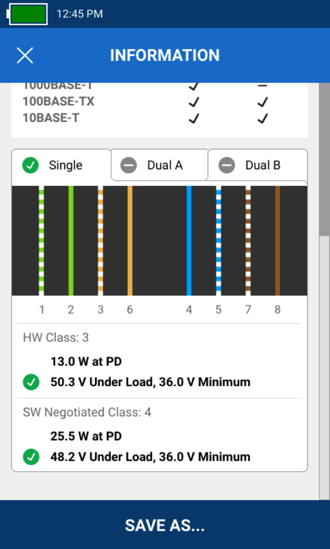
Switch port PoE result shows pairs used, power and class available and results of the PoE test under load.
Network Testing You Need — When It’s Not a Cable Issue
If you’ve ruled out a cable issue via qualification and wire map testing, the problem could reside with the network itself. It could be anything from a misconfiguration to the network switch not supporting the desired application.
The LinkIQ tester provides detailed information about a switch using link layer discovery protocol (LLDP) or Cisco discovery protocol (CDP). This is ideal for identifying problems at the active equipment from the far end of a link, including the name of the switch the link connects to, the switch’s supported speed and duplex settings, the switch port number, and the virtual LAN (VLAN) assigned to the link. You can quickly and easily determine if a network issue is caused by a switch misconfiguration, or if a link was connected to the wrong switch port or assigned to the wrong VLAN — all without having to go back to the closet to check the switch information. If you need to identify the connected switch port, the tester even offers a Blink Port Light feature.
With the LinkIQ tester, you can also configure an IP ping test to determine if a specific gateway or domain name server (DNS) — on the network or internet — is operating and accessible. For the ping test, you can set the IP address for the tester (IPv4 or v6) manually or through Dynamic Host Configuration Protocol (DHCP), a network protocol that enables a server to automatically assign an IP address. The IP ping test is helpful if a device is having trouble reaching a specific target address. It also lets you check latency by determining the average response time of four pings to the target. From the ping result screen, you can check out the response time to target for each of the four pings and see DHCP, DNS, and gateway information.
Wi-Fi Testing — For Any Generation to Wi-Fi 6E
Wi-Fi 6E (802.11ax) is the first-ever Wi-Fi technology to expand operation to the 6 GHz frequency band in addition to the existing Wi-Fi 6 2.4 GHz and 5 GHz bands. At the same time, wireless security protocols have evolved from WEP and WPA to WPA2 and the latest WPA3. With more frequencies, channels, channel widths, and security protocols now available, configuring Wi-Fi is more complex than ever. Unfortunately, that also means a higher potential for common problems that can wreak havoc on your Wi-Fi network, including:
- • Interference from other Wi-Fi networks
- • Congested Channels
- • Weak Signals
- • Improperly configured Access Points
With its internal antenna, the new LinkIQ Duo tester lets you analyze and test your Wi-Fi environment to determine signal strength and identify potential issues. And because it supports Wi-Fi 6E, the LinkIQ Duo tester covers all three frequency bands — 2.4 GHz, 5 GHz, and 6 GHz — making it backward compatible with all earlier Wi-Fi generations.
From the unit’s main screen, you can display the list of available wireless networks, access points, or channels. Choose Networks to see all networks by name, along with their overall signal strength, security status, and number of radios. Touch any specific network to see details on all of its in-range radios, including single strength calculation, access point MAC address, Wi-Fi type, frequency band, channel, and security protocol. Then touch the TEST button to test a specific network/access point combination by tracking signal strength and transmission rates over time.
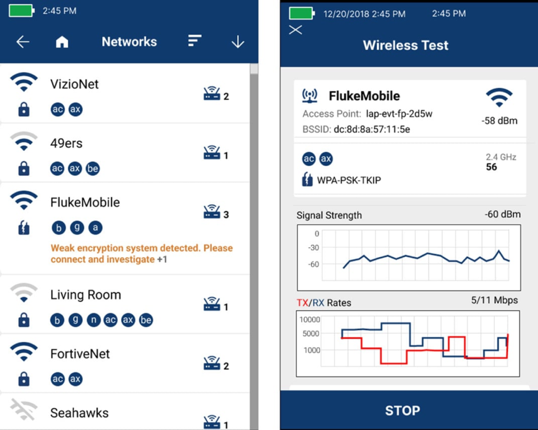
Left: Network detail showing nearest AP, signal strength, radios, band/channel summary, technology and encryption. Right: Access point test shows signal strength and data rates over time.
Choose Access Points to display all available access points by name or MAC address, along with a summary of networks, frequency bands, channels, signal strength, and security. Then select a specific access point to track the signal strength and channel utilization for each radio in the AP. From here or from the home screen, you can also check the utilization of all channels for a specific frequency band, including adjacent access points running on that channel and any channel overlap. Selecting a specific channel displays details such as utilization over time and adjacent radios overlapping with that channel.
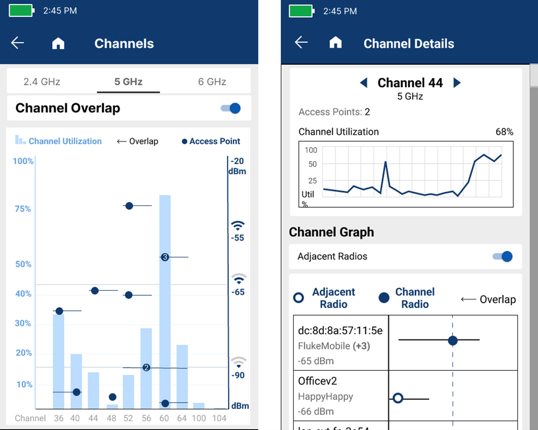
Left: Utilization of each channel on the 5 GHz bandwidth displaying AP’s and overlap for each. Right: Details of an individual channel showing utilization over time and details of radios on or overlapping with that channel.
Even More — From Tones to Documentation
The LinkIQ Duo tester can test more than just cable, PoE, network, and Wi-Fi. It can generate analog or digital tones for use with the Fluke Networks IntelliTone™ Probe or Pro3000™ Tone and Probe, allowing you to trace cables or detect cable faults (opens, shorts, and reversed pairs) in a wall or telecommunications room.
The LinkIQ Duo tester is one of the industry’s easiest to use, with its gesture-based touchscreen interface and clear controls. If English isn’t your first language, no need to worry — all LinkIQ testers support 12 languages: English, German, French, Japanese, Spanish, Thai, Simplified and Traditional Chinese, Korean, Russian, Italian, and Portuguese. The keyboard even supports extended alpha characters and symbols.
If you thought that was easy, the LinkIQ tester’s Autotest option makes testing even easier. With just a tap of the Autotest button, the tester knows if you’re testing the cable or the network by detecting the Remote ID or a switch at the other end.
For today’s increasingly complex networks where documentation is vital, every LinkIQ tester provides complete documentation, with the ability to store up to 1,000 test results with descriptive names that can be numerically incremented automatically to save time when testing in sequence. You can even export the data to Fluke Networks LinkWare™ PC cable test management software, which ensures that everything works together, from storing and managing results to generating PDF reports.
Just when you thought that the LinkIQ tester couldn’t get any better, we’ve expanded its comprehensive cable and network capabilities to include Wi-Fi testing with the LinkIQ Duo Cable+Wi-Fi+Network tester. Now there really is only one tester you need to verify the performance of and troubleshoot your wired and wireless LANs.


